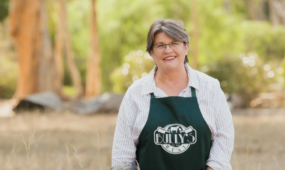To make the best whiskey, start with the best barrel
Lifestyle
PLAYING with fire doesn’t pay off for most, but for cooper Andrew Young it’s a secret tool of the trade.

Sign up to receive notifications about new stories in this category.
Thank you for subscribing to story notifications.

The South Australian’s passion for reclaiming and restructuring barrels has made his work sought after worldwide and helped his clients achieve gold-medal success.
But it is a destiny that might not have been.
“Some people say I’m an old fossil working with time capsules, but every barrel has a story.”
“After I finished school I picked up a job at Penfoldsas a junior cellar hand but every lunchtime I would go and annoy the cooper. I was always interested in woodwork.
“One day I was called to the (Penfolds) front office and I thought I was going to be dismissed. Instead they offered me an apprenticeship.
Under the tutelage of Grange creator winemaker Max Schubert, Andrew learnt the level of commitment, discipline and innovation that is necessary to make a top-end product.
“I wasn’t allowed to use a power tool for the first three years,” he said.
That has now become a great asset for Andrew. After 34 years at Penfolds the wine industry took a significant hit and his position was made redundant.
But when Seppeltsfield winery owner Warren Randall opened the company’s historic cooper shop, a new chapter started.
At the Seppeltsfield site, one hour north of Adelaide, Andrew hand-makes signature barrels for the winery’s acclaimed port. He has even built a machine, completely from farm equipment, to shave the inside of old barrels so they could be reused for wine saving some Japanese clients significant money.

However, it is his work for Tasmanian distillery Lark that is a step above – Andrew’s barrels helped Lark claim the gold medal for Best World Whisky at the International Whiskey Competition in Chicago earlier in 2014.
Why?
Usually after 70-80 years and several cycles of wine and fortified spirits, barrels become nothing more than decoration or a garden planter pot.
Instead, Andrew collects the relics, considers the wood grain and saturation, dismantles them, cuts and shapes them to size and then reworks the wood to create a truly unique product.
“Some people say I’m an old fossil working with time capsules,” he said. “Every barrel has a story.”
But the “black magic” of his trade is the charcoal. Whiskey barrels are burnt to charcoal inside to give the spirit is colour and a great part of its “caramel” flavour. So Andrew works meticulously to capture the best residual flavour from the barrel’s past life – and enhances it for the future using new techniques.
“We have experimented with flame temperature, temperature duration, compressed air and it depends how aggressive we want to be,” he said.
“It’s very old timber so you have to be gentle, we have to introduce the heat slowly, but at the same time it has to be rapid.”
Lark Distillery founder Bill Lark said Andrew’s barrels were undoubtedly a key part of the brand’s success. He said the company had experimented with different barrels over time from ex-sherry and ex-bourbon vats to other brands of port. Port is his preferred base for Lark’s whiskey – he said it creates a point of difference from the saturated bourbon barrel based Scottish market.
“To use port barrels, and in particular Andrew’s Seppeltsfield barrels, is really special,” he said.
“Sixty-five per cent of the character of whiskey comes from the barrel.”
The combination of science, art and innovation have propelled Andrew and Larks Distillery to great heights, but for Andrew it’s still about the simple pleasures.
“I pinch myself every day,” he says. “If I have a piece of wood in my hand, I’m happy.”
Jump to next article



